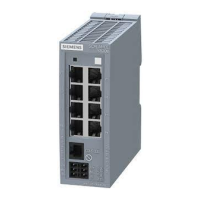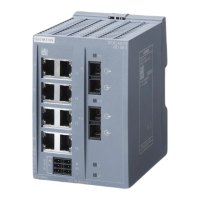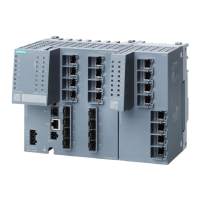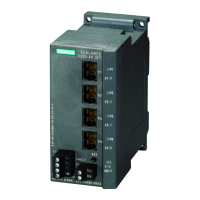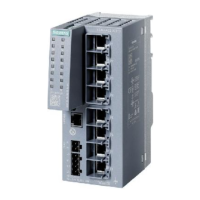Configuring with Web Based Management
5.3 The "Information" menu
SCALANCE XB-200 Web Based Management
54 Configuration Manual, 04/2015, C79000-G8976-C360-02
The table has the following columns:
●
Shows the port via which the device communicates. The port is made up of the module
number and the port number, for example port 0.1 is module 0, port 1.
●
Shows the status of the port. The following values are possible:
– Disabled
The port was removed manually from the spanning tree and will no longer be taken
into account by the spanning tree.
– Designated
The ports leading away from the root bridge.
– Alternate
The port with an alternative route to a network segment
– Backup
If a switch has several ports to the same network segment, the "poorer" Port becomes
the backup port.
– Root
The port that provides the best route to the root bridge.
– Master
This port points to a root bridge located outside the MST region.
●
Displays the current status of the port. The values are only displayed. The parameter
depends on the configured protocol. The following statuses are possible:
– Discarding
The port receives BPDU frames. Other incoming or outgoing frames are discarded.
– Listening
The port receives and sends BPDU frames. The port is involved in the spanning tree
algorithm. Other outgoing and incoming frames are discarded.
– Learning
The port actively learns the topology; in other words, the node addresses. Other
outgoing and incoming frames are discarded.
– Forwarding
Following the reconfiguration time, the port is active in the network. The port receives
and sends data frames.
●
Describes the type of spanning tree in which the port operates
●
If the path calculated by spanning tree is possible over several ports of a device, the port
with the highest priority (in other words the lowest value for this parameter) is selected. A
value between 0 and 240 can be entered for the priority in steps of 16. If you enter a
value that cannot be divided by 16, the value is automatically adapted. The default is 128.
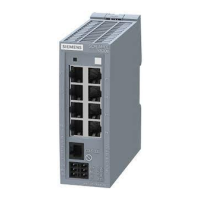
